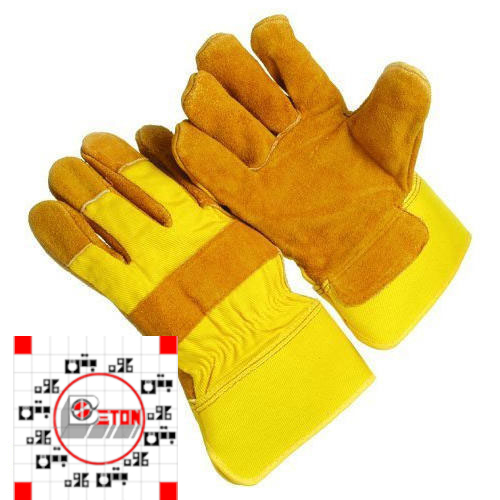Outlined below are some simple suggestions-protection, prevention, common sense precautions-useful to anyone working with portland cement and concrete.
Protect Your Back
All materials used to make concrete—portland cement, coarse aggregate, sand, and water—are quite heavy even in small quantities. When lifting heavy materials, your back should be straight, legs bent, and the weight between your legs as close to the body as possible. Do not twist at the waist while lifting or carrying these items. Rather than straining your back with a heavy load, get help. After the concrete is deposited in the desired area by chute, pump, or wheelbarrow, it should be pushed—not lifted—into final position with a shovel. A short-handled, square-end shovel is an effective tool for spreading concrete, but special concrete rakes or come alongs also can be used. Excessive horizontal movement of the concrete not only requires extra effort, but may also lead to segregation of the concrete ingredients.
Protect Your Head and Eyes
Construction equipment and tools represent constant potential hazards to busy construction personnel. That's why hard hats are required on construction projects. It is therefore recommended that some sort of head protection, such as a hard hat or safety hat, be worn when working any construction job, large or small. Proper eye protection is essential when working with cement or concrete. Eyes are particularly vulnerable to blowing dust, splattering concrete, and other foreign objects.
Protect Your Skin
When working with fresh concrete, care should be taken to avoid skin irritation or chemical burns. Prolonged contact between fresh concrete and skin surfaces, eyes, and clothing may result in burns that are quite severe, including third degree burns. If irritation persists consult a physician.
Placing and Finishing
Waterproof pads should be used between fresh concrete surfaces and knees, elbows, hands, etc., to protect the body during finishing operations.
Some Propositions
Clothing worn as protection from fresh concrete should not be allowed to become saturated with moisture from fresh concrete because saturated clothing can transmit alkaline or hygroscopic effects to the skin.

Wear waterproof gloves, a long-sleeved shirt, and long pants.

If you must stand in fresh concrete while it is being placed, screeded, or floated, wear rubber boots high enough to prevent concrete from getting into them.

The best way to avoid skin irritation is to wash frequently with pH neutral soap and clean water.
Resource: cement.org



